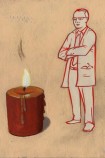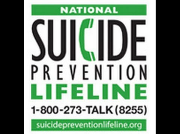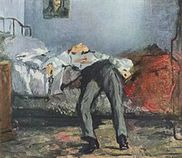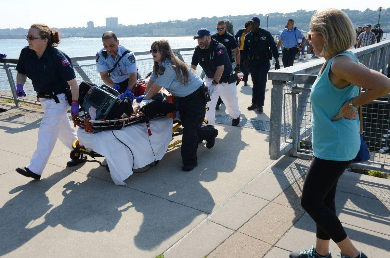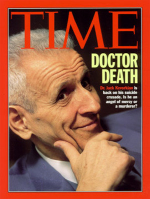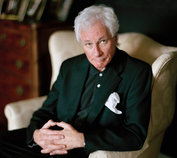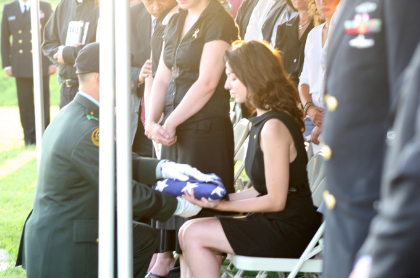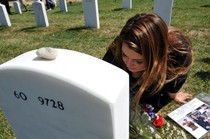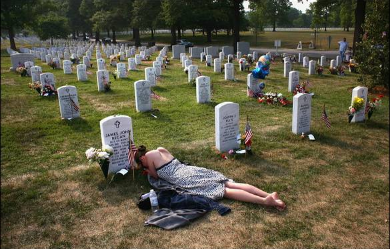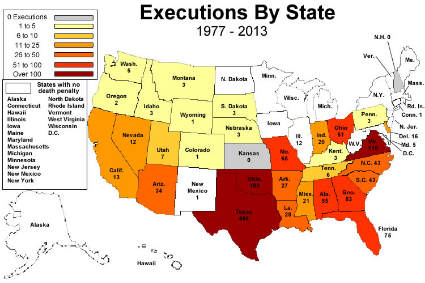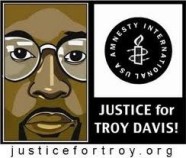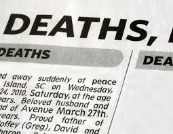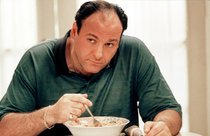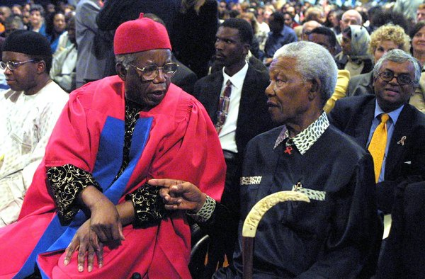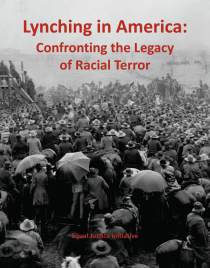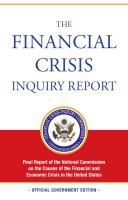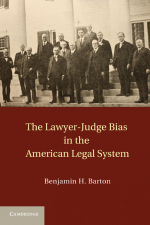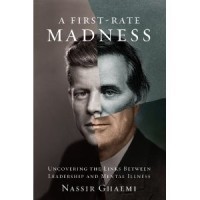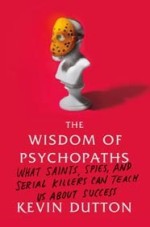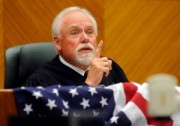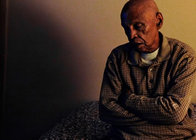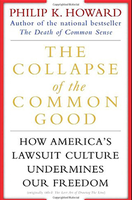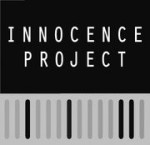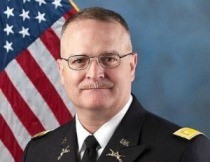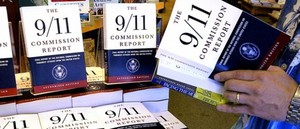Death: The final stage of growth.
The Island Where People Forget to Die
The Island Where People Forget to Die
New York Times Magazine
By DAN BUETTNER
OCT. 24, 2012
In 1943, a Greek war veteran named Stamatis Moraitis came to the United States for treatment of a combat-mangled arm. He’d survived a gunshot wound, escaped to Turkey and eventually talked his way onto the Queen Elizabeth, then serving as a troopship, to cross the Atlantic. Moraitis settled in Port Jefferson, N.Y., an enclave of countrymen from his native island, Ikaria. He quickly landed a job doing manual labor. Later, he moved to Boynton Beach, Fla. Along the way, Moraitis married a Greek-American woman, had three children and bought a three-bedroom house and a 1951 Chevrolet.
One day in 1976, Moraitis felt short of breath. Climbing stairs was a chore; he had to quit working midday. After X-rays, his doctor concluded that Moraitis had lung cancer. As he recalls, nine other doctors confirmed the diagnosis. They gave him nine months to live. He was in his mid-60s.
Moraitis considered staying in America and seeking aggressive cancer treatment at a local hospital. That way, he could also be close to his adult children. But he decided instead to return to Ikaria, where he could be buried with his ancestors in a cemetery shaded by oak trees that overlooked the Aegean Sea. He figured a funeral in the United States would cost thousands, a traditional Ikarian one only $200, leaving more of his retirement savings for his wife, Elpiniki. Moraitis and Elpiniki moved in with his elderly parents, into a tiny, whitewashed house on two acres of stepped vineyards near Evdilos, on the north side of Ikaria. At first, he spent his days in bed, as his mother and wife tended to him. He reconnected with his faith. On Sunday mornings, he hobbled up the hill to a tiny Greek Orthodox chapel where his grandfather once served as a priest. When his childhood friends discovered that he had moved back, they started showing up every afternoon. They’d talk for hours, an activity that invariably involved a bottle or two of locally produced wine. I might as well die happy, he thought.
 Residents of the island Ikaria in Greece live profoundly long and healthful lives. Credit Andrea Frazzetta/LUZphoto for The NYT
Residents of the island Ikaria in Greece live profoundly long and healthful lives. Credit Andrea Frazzetta/LUZphoto for The NYT
In the ensuing months, something strange happened. He says he started to feel stronger. One day, feeling ambitious, he planted some vegetables in the garden. He didn’t expect to live to harvest them, but he enjoyed being in the sunshine, breathing the ocean air. Elpiniki could enjoy the fresh vegetables after he was gone.
Six months came and went. Moraitis didn’t die. Instead, he reaped his garden and, feeling emboldened, cleaned up the family vineyard as well. Easing himself into the island routine, he woke up when he felt like it, worked in the vineyards until midafternoon, made himself lunch and then took a long nap. In the evenings, he often walked to the local tavern, where he played dominoes past midnight. The years passed. His health continued to improve. He added a couple of rooms to his parents’ home so his children could visit. He built up the vineyard until it produced 400 gallons of wine a year. Today, three and a half decades later, he’s 97 years old — according to an official document he disputes; he says he’s 102 — and cancer-free. He never went through chemotherapy, took drugs or sought therapy of any sort. All he did was move home to Ikaria. read more
Stamatis Moraitis, 98, talks about life on Ikaria (BBC)
............................................Death................................................
Death
Wikipedia
Death is the termination of all biological functions that sustain a living organism. Phenomena which commonly bring about death include biological aging (senescence), predation, malnutrition, disease, suicide, homicide, starvation, dehydration, and accidents or trauma resulting in terminal injury.[1] Bodies of living organisms begin to decompose shortly after death. Death of humans has commonly been considered a sad or unpleasant occasion, due to the termination of social and familial bonds with the deceased or affection for the being that has died. Other concerns include fear of death, necrophobia, anxiety, sorrow, grief, emotional pain, depression, sympathy, compassion, solitude, or saudade. Read more
Philosophy as an Art of Dying
The New York Times
by Costica Bradatan
June 12, 2011
It happens rarely, but when it does it causes a commotion of great proportions; it attracts the attention of all, becomes a popular topic for discussion and debate in
marketplaces and taverns. It drives people to take sides, quarrel and fight, which for things philosophical is quite remarkable. It happened to Socrates, Hypatia, Thomas More, Giordano Bruno, Jan
Patocka, and a few others. Due to an irrevocable death sentence, imminent mob execution or torture to death, these philosophers found themselves in the most paradoxical of situations: lovers of logic
and rational argumentation, silenced by brute force; professional makers of discourses, banned from using the word; masters of debate and contradiction, able to argue no more. What was left of these
philosophers then? Just their silence, their sheer physical presence. The only means of expression left to them, their own bodies — and dying bodies at that. Read more
Why Doctors Die Differently - By Ken Murray, M.D.
Why Doctors Die Differently
The Wall Street Journal
By Ken Murray
February 25, 2012
Careers in medicine have taught them the limits of treatment and the need to plan for the end. What's unusual about doctors is not how much treatment they get compared with most Americans, but how little.
Years ago, Charlie, a highly respected orthopedist and a mentor of mine, found a lump in his stomach. It was diagnosed as pancreatic cancer by one of the best surgeons
in the country, who had developed a procedure that could triple a patient’s five-year-survival odds—from 5% to 15%—albeit with a poor quality of life.
Charlie, 68 years old, was uninterested. He went home the next day, closed his practice and never set foot in a hospital again. He focused on spending time with his
family. Several months later, he died at home. He got no chemotherapy, radiation or surgical treatment. Medicare didn’t spend much on him.
It's not something that we like to talk about, but doctors die, too. What's unusual about them is not how much treatment they get compared with most Americans, but how
little. They know exactly what is going to happen, they know the choices, and they generally have access to any sort of medical care that they could want. But they tend to go serenely and
gently.
It's not something that we like to talk about, but doctors die, too. What's unusual about them is not how much treatment they get compared with most Americans, but how
little. They know exactly what is going to happen, they know the choices, and they generally have access to any sort of medical care that they could want. But they tend to go serenely and
gently.
Doctors don't want to die any more than anyone else does. But they usually have talked about the limits of modern medicine with their families. They want to make sure
that, when the time comes, no heroic measures are taken. During their last moments, they know, for instance, that they don't want someone breaking their ribs by performing cardiopulmonary
resuscitation (which is what happens when CPR is done right).
In a 2003 article, Joseph J. Gallo and others looked at what physicians want when it comes to end-of-life decisions. In a survey of 765 doctors, they found that 64% had
created an advanced directive—specifying what steps should and should not be taken to save their lives should they become incapacitated. That compares to only about 20% for the general public. (As
one might expect, older doctors are more likely than younger doctors to have made "arrangements," as shown in a study by Paula Lester and others.)
Why such a large gap between the decisions of doctors and patients? The case of CPR is instructive. A study by Susan Diem and others of how CPR is portrayed on TV found
that it was successful in 75% of the cases and that 67% of the TV patients went home. In reality, a 2010 study of more than 95,000 cases of CPR found that only 8% of patients survived for more than
one month. Of these, only about 3% could lead a mostly normal life.
Unlike previous eras, when doctors simply did what they thought was best, our system is now based on what patients choose. Physicians really try to honor their patients'
wishes, but when patients ask "What would you do?," we often avoid answering. We don't want to impose our views on the vulnerable.
The result is that more people receive futile "lifesaving" care, and fewer people die at home than did, say, 60 years ago. Nursing professor Karen Kehl, in an article
called "Moving Toward Peace: An Analysis of the Concept of a Good Death," ranked the attributes of a graceful death, among them: being comfortable and in control, having a sense of closure, making
the most of relationships and having family involved in care. Hospitals today provide few of these qualities.
Written directives can give patients far more control over how their lives end. But while most of us accept that taxes are inescapable, death is a much harder pill to
swallow, which keeps the vast majority of Americans from making proper arrangements.
It doesn't have to be that way. Several years ago, at age 60, my older cousin Torch (born at home by the light of a flashlight, or torch) had a seizure. It turned out to
be the result of lung cancer that had gone to his brain. We learned that with aggressive treatment, including three to five hospital visits a week for chemotherapy, he would live perhaps four
months.
Torch was no doctor, but he knew that he wanted a life of quality, not just quantity. Ultimately, he decided against any treatment and simply took pills for brain
swelling. He moved in with me.
We spent the next eight months having fun together like we hadn't had in decades. We went to Disneyland, his first time, and we hung out at home. Torch was a sports nut,
and he was very happy to watch sports and eat my cooking. He had no serious pain, and he remained high-spirited.
One day, he didn't wake up. He spent the next three days in a coma-like sleep and then died. The cost of his medical care for those eight months, for the one drug he was
taking, was about $20.
As for me, my doctor has my choices on record. They were easy to make, as they are for most physicians. There will be no heroics, and I will go gentle into that good
night. Like my mentor Charlie. Like my cousin Torch. Like so many of my fellow doctors.
—Dr. Murray is retired clinical assistant professor of family medicine at the University of Southern California. Adapted from an article originally published on
Zocalo Public Square. Read more
A Doctor on How Physicians Face the End [...]
Adobe Acrobat document [96.3 KB]
Why Doctors Die Differently By Ken Murra[...]
Adobe Acrobat document [188.7 KB]
If I die young, bury me in satin
Lay me down on a bed of roses
Sink me in the river at dawn
Send me away with the words of a love song
The sharp knife of a short life, oh well
I've had just enough time (azlyrics.com)
"If I Die Young" is a song written by Kimberly Perry, and recorded by American country music group The Band Perry. It was released in June 2010 as the second single from the group's self-titled debut album, which was released on October 12, 2010. Wikipedia
Trying to Live Forever
The New York Times
by Gary Gutting
August 9, 2011
The Stone is featuring occasional posts by Gary Gutting, a professor of philosophy at the University of Notre Dame, that apply critical thinking to information and
events that have appeared in the news.
Almost every day I read about a new medical study that says I would be healthier if, for example, I ate more fish, drank red rather than white wine, took enchinacea, or
began practicing yoga. Do such studies represent a significant body of knowledge that I should pay attention to?
An article in the May Consumer Reports Health shed some light on this question. It discussed the widely publicized medical study that showed, contrary to
expectations, that "raising HDL (good) cholesterol with drugs did nothing to protect against heart attacks." This, the article said, was surprising because observational studies had shown that
people with lower levels of HDL had more heart attacks than those with higher levels of HDL. An observational study, however, shows only a correlation between two variables (e.g., level
of HDL and number of heart attacks). The new result came from a randomized clinical study, using one group of patients who receive a given treatment and a "control group" of patients who do
not. Unlike an observational study, such a study can show whether or not, for example, higher HDL actually prevents heart attacks. The article went on to emphasize that "we should almost
never rely on the results of observational studies, which can only suggest associations with disease but not prove them."
There are cases in which very careful observational studies involving large numbers of subjects can establish causal connections; this was how we learned that smoking
causes lung cancer. But most observational studies, including almost all reported in popular media, use a small number of subjects and, at best, suggest directions for further research and do
not establish reliable conclusions. Read more
The Order of the Good Death
Washing Kathryn, Touching Death
By Nora Menkin
No matter how long you’ve been working with dead bodies, it can still be emotionally difficult. But what if the person was someone you knew? Nora Menkin, funeral director, tells us this story.
She is lying, partially wrapped in a plastic sheet, on a cold metal table in our prep room. Her head is tilted slightly away from me so I can’t see her face yet. I can see she is still in her hospital gown and there is a port still attached to her neck. I take a deep breath and walk toward her. As I come around her head, the row of staples on her scalp goes from her hairline back behind her head where I can’t even see them end. There is another row above her ear and her skull is obviously missing from under her skin between the two tracks. Her curly hair is matted on one side, shaved on the other. I have a full view of her face now.
It is definitely her, but not her. Kathryn, my friend, is lying dead in front of me. We worked together before I became a funeral director. We worked in an intimate environment where co-workers become family. I hadn’t seen her in few years. She traveled for work a lot, I started a different career. But she was my friend. Here she was in front of me, and I had a job to do. Read more
Embracing life's rites of passage through interfaith articles, poetry, reflection and service within our community.
The Co-op Funeral Home of People's Memorial is a funeral home and mortuary that provides dignified, affordable burial and cremation services to individuals and families in Seattle and throughout the King County area. We are dedicated to helping you make choices that are consistent with your values and within your family’s budget. Read more
.............................................Suicide............................................
National Suicide Prevention Lifeline
Call 1-800-273-8255
Suicide in America: FAQ (2015) National Institute of Mental
Health
Voices of Education
Suicide
Wikipedia
Suicide is the act of intentionally causing one's own death.[1] Risk factors include mental illness such as depression, bipolar disorder, schizophrenia, personality disorders, alcoholism, or drug abuse.[2][3] Others are impulsive acts due to stress such as from financial difficulties, troubles with relationships, or bullying.[3][4] Those who have previously attempted suicide are at high risk of future attempts.[3] Suicide prevention efforts include limiting access to method of suicide such as firearms and poisons, treating mental illness and drug misuse, proper media reporting of suicide, and improving economic conditions.[3] Although crisis hotlines are common, there is little evidence for their effectiveness.[5]
The most commonly used method of suicide varies between countries, and is partly related to the availability of effective means.[6] Common methods include: hanging, pesticide poisoning, and firearms.[7] Suicide resulted in 842,000 deaths in 2013 up from 712,000 deaths in 1990.[8] This makes it the 10th leading cause of death worldwide.[2][9] Rates of completed suicides are generally higher in men than in women, with males three to four times more likely to kill themselves than females.[10] There are an estimated 10 to 20 million non-fatal attempted suicides every year.[11] Non-fatal suicide attempts may lead to injury and long-term disabilities. In the Western world, attempts are more common in young people and are four times more common in females than in males.[12]
Views on suicide have been influenced by broad existential themes such as religion, honor, and the meaning of life.[13][14] The Abrahamic religions traditionally consider suicide an offense towards God due to the belief in the sanctity of life.[15] During the samurai era in Japan, a form of suicide known as seppuku was respected as a means of making up for failure or as a form of protest.[16] Sati, a practice outlawed by the British Raj, expected the Indian widow to kill herself on her husband's funeral fire, either willingly or under pressure from the family and society.[17] Suicide and attempted suicide, while previously illegal, are no longer in most Western countries.[18] It remains a criminal offense in many countries.[19] In the 20th and 21st centuries, suicide has been used on rare occasions as a form of protest, and kamikaze and suicide bombings have been used as a military or terrorist tactic.[20] The word is from the Latin suicidium, which means "to kill oneself".[21] Read more
____________________________________________________
- Suicide Psychology Today
- Why Suicide Has Become an Epidemic
- and What We Can Do to Help, Newsweek
- Suicide: Read This First - Metanoia
_____________________________________________________
American Foundation for Suicide Prevention
Risk Factors and Warning Signs
The Atlantic: Why are so many kids with bright prospects killing themselves in Palo Alto?
_____________________________________________________
Brooklyn woman identified as person who took death leap off
George Washington Bridge
New York Daily News
By Reuven Blau
June 21, 2016
A 28-year-old woman from Brooklyn was identified Tuesday as the person who took a fatal plunge off the George Washington Bridge, authorities said.
Rebecca Wasserstrum was spotted by a driver as she jumped from the bridge near the tower on the New York side of the span at about 4:15 p.m. Sunday, said Port Authority spokesman Joseph Pentangelo.
The driver rushed out of his car and saw the woman floating in the Hudson River below.
Wasserstrum was rushed to St. Luke’s Hospital, but doctors weren’t able to save her from the injuries she sustained from the 200-foot dive into the water.
On Tuesday, friends remembered Wasserstrum as a sweet and genuine person.
"We are all so heartbroken," said Ray Tee on Facebook. "Yet all I see is your smile and the love you had for everyone that you met. You will be so missed.
"I pray your soul will now be at peace," Tee added. Wasserstrum’s death was the seventh this year from the bridge. Read more
- Woman dies in George Washington Bridge leap
- Man dies after leap from George Washington Bridge
Terminally ill Brittany Maynard ends her life; her act may
influence right-to-die debate
ABA Journal Law News Now
Posted Nov 03, 2014
By Mark Hansen
The death of Brittany Maynard, the terminally ill woman who died Saturday at her Oregon home after taking a lethal dose of barbiturates prescribed by her physician, may forever change the right-the-die debate in this country.
In the weeks leading up to her death, the 29-year-old Maynard, who was diagnosed with terminal brain cancer earlier this year, became the face of the debate, the Washington Post reports. And now that she is gone, the path she pioneered may bring the physician-assisted suicide movement to a new generation.
Because Maynard was such a "young, vivacious, attractive" woman, says Arthur Caplan, an expert on medical ethics at New York University, she has changed the optics of the debate.
In Oregon, the median age of someone using the state’s right-to-die law is 71, the Post reported. Only six people under the age of 34 have used it.
"Now we have a young woman getting people in her generation interested in the issue," Caplan wrote in an article for Medscape. "Critics are worried about her partly because she’s speaking to that new audience, and they know that the younger generation of America has shifted attitudes about gay marriage and the use of marijuana, and maybe they are going to have that same impact in pushing physician-assisted suicide forward."
Only three states—Oregon, Washington and Vermont—explicitly allow physician-assisted suicide. The Montana Supreme Court ruled in 2009 that state law doesn’t prohibit end-of-life care. And a New Mexico district court judge, in a decision that is still under appeal, held earlier this year that terminally ill people who are mentally competent have a constitutional right to legally prescribed end-of-life drugs, Time magazine reported.
But similar legislation is now pending in at least seven other states. And New Jersey Assemblyman John Burzichelli (D-Cloucester County), the sponsor of a bill there, told the Philadelphia Inquirer last month that he thinks the measure will pass the state legislature by the end of the year. New Jersey’s Republican Gov. Chris Christie, however, has said he opposes the measure, the Associated Press reported.
Caplan said Maynard’s death may be only the beginning of a much longer debate.
"My forecast is that we are going to see more push to put these laws in the front of state legislatures and to get them on state ballots," he wrote. "We are going to see more states move in this direction. That ultimately may be her legacy to the physician-assisted suicide debate."
No right-to-die legislation is on any of Tuesday ballots, however, the AP reported. Read more
_____________________________________________________
My Right to Die, Mother Jones
Assisted suicide, my family, and me.
By Kevin Drum, January/February 2016 issue
_____________________________________________________
Euthanasia (from Greek: εὐθανασία; "good death": εὖ, eu; "well" or "good" – θάνατος, thanatos; "death") refers to the practice of intentionally ending a life in order to relieve pain and suffering. Wikipedia
Hospice care is a type of care and philosophy of care that focuses on the palliation of a chronically ill, terminally ill or seriously ill patient's pain and symptoms, and attending to their emotional and spiritual needs. Wikipedia
Brittany Maynard is the niece of
Alison (Sunny) Maynard, who once practiced law in Colorado, and currently blogs at The Real Colorado.
Sunny Maynard has two posts about her niece Brittany Maynard.
Alison (Sunny) Maynard was the Green Party candidate for Colorado Attorney General in 2002.
Brittany Maynard, My Undead Niece
By Alison (Sunny) Maynard
Wednesday, February 4, 2015
A Very Weird Coincidence
By Alison (Sunny) Maynard
Sunday, June 28, 2015
_____________________________________________________
How Brittany Maynard Found Peace of Mind in Oregon
Oprah where are they now?
Brittany Maynard’s Husband Shares Intimate Details of Final Day
Oprah where are they now?
The Last Promise Dan Diaz Made to His Wife, Brittany Maynard
Oprah where are they now?
The Life and Deaths of Jack Kevorkian (1928–2011)
The Life and Deaths of Jack Kevorkian (1928–2011)
Time Magazine
June 3, 2011
"My specialty is death," Dr. Jack Kevorkian told TIME back in 1993 as he burnished his qualifications to counsel people on taking their own lives. The white-haired, wiry
physician cited his specialization and, with no evidence of humility, declared, "If not a pathologist, who? Would you have a pediatrician do it? Or let's get more absurd. What if I was a urologist?
Could I help only men end their lives?"
When TIME did its cover on "Dr. Death" 18 years ago, Kevorkian was about to participate in his 16th assisted suicide. By the time his own end came — in Detroit, from
kidney-related complications on the eve of the 21st anniversary of his first assisted suicide — the controversial physician was said to have had a role in more than 130 deaths. He had also served
more than eight years in prison for second-degree murder and had the out-of-body pleasure of seeing Al Pacino portray him in an HBO movie called You Don't Know Jack. Read more
Wikipedia
Jack Kevorkian (May-26-1928 - June-03-2011) was an American pathologist, euthanasia activist, painter, author, composer, and instrumentalist. He is best known for publicly championing a terminal patient's right to die via physician-assisted suicide; he claimed to have assisted at least 130 patients to that end. He was often portrayed in the media as "Dr. Death"; however, many consider him a hero as he helped set the platform for reform. He famously said, "Dying is not a crime."[2]
In 1999, Kevorkian was arrested and tried for his direct role in a case of voluntary euthanasia. He was convicted of second-degree murder and served eight years of a 10-to-25-year prison sentence. He was released on parole on June 1, 2007, on condition he would not offer advice nor participate nor be present in the act of any type of suicide involving euthanasia to any other person; as well as neither promote nor talk about the procedure of assisted suicide.[3]
As an oil painter and a jazz musician, Kevorkian marketed limited quantities of his visual and musical artwork to the public. more
Dr. Jack Kevorkian 60 Minutes Interview, November 22, 1996
60 Minutes CBS News
Mike Wallace Interview
November 22, 1996
Of all the interviews he conducted for "60 Minutes," Mike Wallace often said none had a greater impact than this one.
Dr. Jack Kevorkian had long been a public advocate of assisted suicide for the terminally ill. From 1990 to 1998, he claimed to have helped end the lives of some 130
willing subjects. In September of 1998, Dr. Jack Kevorkian videotaped himself injecting Thomas Youk, who suffered from Lou Gehrig's disease, with a dose of lethal drugs.
Two months later, that videotape, along with Wallace's interview with Kevorkian, aired on "60 Minutes," sparking a national outcry. In March of 1999, Kevorkian was
convicted of second-degree murder and sentenced to 10-to-25 years in prison. He was released in 2007. Dr. Jack Kevorkian was 83 when he died. He suffered from kidney and heart problems and died,
according to news reports, of natural causes. Read more
Dr. Kevorkian Free And Talking
60 Minutes CBS News
Mike Wallace Interview
June 4, 2007
In Full: In his first interview after being released from jail, Dr. Jack Kevorkian tells Mike Wallace he won't help anyone else commit suicide, but he still thinks it
should be legal. Read more
Aging with Dignity - Five Wishes End of Life Documents
Aging with Dignity
Aging with Dignity is a national non-profit organization with a mission to affirm and safeguard the human dignity of individuals as they age and to promote better care for those near the end of life. The life and work of Mother Teresa of Calcutta served as the inspirational foundation of Aging with Dignity. Aging with Dignity founder Jim Towey served as Mother Teresa's friend and legal counsel for 12 years and was a full-time volunteer in her home for people with AIDS. Her tender care and concern for all a person’s needs – medical, emotional and spiritual – served as the inspiration for Five Wishes, America’s most popular living will. Read more
Advance Directives - Baptist Health South Florida
Patient Information, Advance Directives
Understanding Advance Directives
Advance Directives form (2 page PDF)
1. Designation of Health Care Surrogate
2. Organ Donation
3. Living Will
Advance Directives - Baptist Health South Florida
Please take about 7-minutes to watch this very informative video on Advance Directives. The video explains what is an advance medical directive and why it is important to complete one. It also provides information on how to complete an advance directive and where you can obtain this document.
The New York Times
by Dudley Clendinen
July 9, 2011
I HAVE wonderful friends. In this last year, one took me to Istanbul. One gave me a box of hand-crafted chocolates. Fifteen of them held two rousing, pre-posthumous
wakes for me. Several wrote large checks. Two sent me a boxed set of all the Bach sacred cantatas. And one, from Texas, put a hand on my thinning shoulder, and appeared to study the ground where we
were standing. He had flown in to see me.
"We need to go buy you a pistol, don’t we?" he asked quietly. He meant to shoot myself with.
"Yes, Sweet Thing," I said, with a smile. "We do."
I loved him for that.
I love them all. I am acutely lucky in my family and friends, and in my daughter, my work and my life. But I have amyotrophic lateral sclerosis, or A.L.S., more kindly
known as Lou Gehrig’s disease, for the great Yankee hitter and first baseman who was told he had it in 1939, accepted the verdict with such famous grace, and died less than two years later. He was
almost 38.
I sometimes call it Lou, in his honor, and because the familiar feels less threatening. But it is not a kind disease. The nerves and muscles pulse and twitch, and
progressively, they die. From the outside, it looks like the ripple of piano keys in the muscles under my skin. From the inside, it feels like anxious butterflies, trying to get out. It starts in the
hands and feet and works its way up and in, or it begins in the muscles of the mouth and throat and chest and abdomen, and works its way down and out. The second way is called bulbar, and that’s the
way it is with me. We don’t live as long, because it affects our ability to breathe early on, and it just gets worse.
At the moment, for 66, I look pretty good. I’ve lost 20 pounds. My face is thinner. I even get some "Hey, there, Big Boy," looks, which I like. I think of it as my
cosmetic phase. But it’s hard to smile, and chew. I’m short of breath. I choke a lot. I sound like a wheezy, lisping drunk. For a recovering alcoholic, it’s really annoying.
There is no meaningful treatment. No cure. There is one medication, Rilutek, which might make a few months’ difference. It retails for about $14,000 a year. That doesn’t
seem worthwhile to me. If I let this run the whole course, with all the human, medical, technological and loving support I will start to need just months from now, it will leave me, in 5 or 8 or 12
or more years, a conscious but motionless, mute, withered, incontinent mummy of my former self. Maintained by feeding and waste tubes, breathing and suctioning machines.
No, thank you. I hate being a drag. I don’t think I’ll stick around for the back half of Lou. Read more
Dudley Clendinen, Reporter and Editor, Dies at 67
The New York Times
By ROBERT D. McFADDEN
May 31, 2012
"With his condition deteriorating, he wrote an essay in The New York Times Sunday Review on July 10, 2011, announcing his intention to commit suicide before becoming a
"mute, withered, incontinent mummy of my former self." His daughter, however, said he had died as a result of the disease and not by his own hand, and had been deeply involved in writing a book about
his life and illness. In the essay, Mr. Clendinen challenged Americans to open a dialogue on dying."
"We obsess in this country about how to eat and dress and drink, about finding a job and a mate," he wrote. "About having sex and children. About how to live. But we
don’t talk about how to die. We act as if facing death weren’t one of life’s greatest, most absorbing thrills and challenges. Believe me, it is. This is not dull." Read more
Also see Living with Lou: Dudley Clendinen on a Good, Short Life
Death And Budgets
The New York Times
by David Brooks
July 14, 2011
I hope you had the chance to read and reread Dudley Clendinen’s splendid essay, "The Good Short Life," in The Times’s Sunday Review section. Clendinen is dying of amyotrophic lateral sclerosis, or A.L.S. If he uses all the available medical technology, it will leave him, in a few years’ time, "a conscious but motionless, mute, withered, incontinent mummy of my former self."
Instead of choosing that long, dehumanizing, expensive course, Clendinen has decided to face death as one of life’s “most absorbing thrills and challenges.” He concludes: “When the music stops — when I can’t tie my bow tie, tell a funny story, walk my dog, talk with Whitney, kiss someone special, or tap out lines like this — I’ll know that Life is over. It’s time to be gone.” Read more
How to Die
The New York Times
By BILL KELLER
October 7, 2012
ONE morning last month, Anthony Gilbey awakened from anesthesia in a hospital in the east of England. At his bedside were his daughter and an attending
physician.
The surgery had been unsuccessful, the doctor informed him. There was nothing more that could be done.
"So I’m dying?" the patient asked.
The doctor hesitated. "Yes," he said.
"You’re dying, Dad," his daughter affirmed.
"So," the patient mused, "no more whoop-de-doo."
"On the other side, there’ll be loads," his daughter — my wife — promised.
The patient laughed. "Yes," he said. He was dead six days later, a few months shy of his 80th birthday.
When they told my father-in-law the hospital had done all it could, that was not, in the strictest sense, true. There was nothing the doctors could do about the large,
inoperable tumor colonizing his insides. But they could have maintained his failing kidneys by putting him on dialysis. They could have continued pumping insulin to control his diabetes. He wore a
pacemaker that kept his heart beating regardless of what else was happening to him, so with aggressive treatment they could — and many hospitals would — have sustained a kind of life for a
while.
But the hospital that treated him offers a protocol called the Liverpool Care Pathway for the Dying Patient, which was conceived in the 90s at a Liverpool cancer facility
as a more humane alternative to the frantic end-of-life assault of desperate measures. "The Hippocratic oath just drives clinicians toward constantly treating the patient, right until the moment they
die," said Sir Thomas Hughes-Hallett, who was until recently the chief executive of the center where the protocol was designed. English doctors, he said, tell a joke about this imperative: "Why in
Ireland do they put screws in coffins? To keep the doctors out." Read more
Wikipedia
American Widow Project (AWP) is a non-profit organization providing peer to peer support to a new generation of military widows grieving the loss of a spouse in the United States armed forces.
AWP was founded in 2007 by Taryn Davis of San Marcos, TX[1] after her husband, CPL Michael Davis, was killed in action in the Iraq war on May 21, 2007. Finding herself a widow at the age of 22, she discovered that there were few resources to help young military widows. To date, her nonprofit has provided a community of support to more than 900 young military widows.[2]
Following her grief and confusion, four months later she began work on a documentary speaking to military widows, hearing their stories of love, tragedy and overall survival. The documentary was shown to military widows who gathered in Austin, Texas from across the country in July 2008, for the official "launch" of the American Widow Project. During the launch In Their Boots was on location to film and interview widows. Read more
Taryn Davis is the founder of
Since 2001, over 6,600 U.S. service members have lost their lives in Iraq and Afghanistan, not including thousands of lives lost to illness and suicide. Thousands of wives and families are left to grieve, often alone. Read more
A military widow whose husband is frequently mentioned by Mitt Romney during campaign speeches has spoken of her pride at seeing her loved one commemorated on a national stage.
Jane Horton, whose husband Chris was killed in Afghanistan shortly after telling her, 'I need a new President,' said she was 'deeply humbled' by the presidential candidate's frequent references to the family.
The Romney campaign did not ask for permission to use Mr Horton's story, but as a strong supporter of the challenger Mrs Horton described the news as 'the greatest honour of my life', according to ABC News. Read more
The Hungover Widow
He died. Now what?
Blog by Debbie Weiss
Capital punishment in the United States (death penalty)
Scalia says he 'wouldn't be surprised' if SCOTUS overturns the death penalty
Scalia says he 'wouldn't be surprised' if SCOTUS
overturns the death penalty
ABA Journal
By Debra Cassens Weiss
Sept. 24, 2015
Updated: Justice Antonin Scalia delivered his standard defense of originalism in a speech on Tuesday that included an unusual observation about the justices’ stance on capital punishment: Scalia said he "wouldn’t be surprised" if the U.S. Supreme Court overturns the death penalty.
Scalia told students at Rhodes College he has four colleagues who believe the death penalty is unconstitutional, reports the Memphis Commercial Appeal. The Associated Press also covered the speech, but did not include Scalia’s death-penalty remarks.
In a June dissent by Justice Stephen G. Breyer, joined by Justice Ruth Bader Ginsburg, he called for a briefing on whether the death penalty is constitutional. "I believe it highly likely that the death penalty violates the Eighth Amendment," Breyer said in the dissent.
Two days after Scalia’s speech, Pope Francis called for abolition of the death penalty in a speech to Congress. Four Supreme Court justices sitting in the audience, including Ginsburg, did not applaud or visibly react, the Washington Post reports. The other justices in attendance on Thursday were Chief Justice John G. Roberts Jr. and Justices Anthony M. Kennedy and Sonia Sotomayor.
Scalia said in his speech that justices on the current Supreme Court are "terribly unrepresentative of our country" and noted the only justice from the South is Clarence Thomas. The other justices are from California, New York and New Jersey. "Do you really want your judges to rewrite the Constitution?" he asked.
The recent same-sex marriage decision, Scalia said, was the "furthest imaginable extension of the Supreme Court doing whatever it wants."
Scalia said the idea of adding freedoms to the Constitution isn’t "always good, unless you’re an anarchist." The trick, he said, was to balance freedom with order.
Hat tip: Buzzfeed
Capital punishment in the United States
Capital punishment in the United States
Wikipedia
In the United States, capital punishment—also called the death penalty—is a legal sentence in 31 states[1] and the federal civilian and military legal systems. Its applications are limited by the Eighth Amendment to the United States Constitution to aggravated murders committed by mentally competent adults.
Capital punishment was a penalty for many felonies under English common law, and it was enforced in all of the American colonies prior to the Declaration of Independence. The methods of execution and the crimes subject to the death penalty vary by state and have changed over time. The most common method since 1976 has been lethal injection. Since capital punishment was reinstated in 1976, thirty-four states have performed executions.
In 2015, 28 inmates were executed by 6 U.S. States (Florida: 2, Georgia: 5, Missouri: 6, Oklahoma: 1, Texas: 13 [including one volunteer], Virginia: 1),[2][3] and 2,984 were on death row.[4]
States such as Texas, Oklahoma, Florida, Missouri, Ohio, Virginia, Georgia, and Arizona execute convicted murderers with relative frequency. Texas has performed the most executions by far, and Oklahoma has had (through mid-2011) the highest per capita execution rate.[5] Alabama has the highest per capita rate of prisoners on death row in the US.[6] However, a number of states have abolished the death penalty. No other Western country still uses the death penalty except for the United States.[7] Read more
Texas Death Row Inmates: No More Special Last Meals
Texas Death Row Inmates Will No Longer Get Special Last
Meals
ABA Journal, Law News Now
by Debra Cassens Weiss
September 23, 2011
Texas has eliminated special last meals for death-row inmates after one prisoner’s huge food request brought criticism from a state lawmaker.
Lawrence Russell Brewer was executed on Wednesday without touching his last meal, the Associated Press reports. His
food request included two chicken fried steaks, a triple bacon cheeseburger, a pound of barbecue, three fajitas, a pint of ice cream, a pizza and peanut butter fudge.
State Sen. John Whitmire said Thursday he would seek legislation to end last meals unless prison officials stopped providing the special food. Prisons director Brad
Livingston responded with an announcement that he’s putting an immediate end to the practice.
According to the AP story, Brewer’s request may have been extensive, but it was not the largest or most bizarre. Two years ago, one Texas inmate requested dirt for his
final meal.
It's a moot point now, but the Dallas Morning News blog
The Scoop points out that last meal requests weren't always satisfied. The prison kitchen used food that was on hand that was the closest thing possible to the menu requested. Huge food requests
were also trimmed down to reasonable portions. Read more
An Indefensible Punishment
The New York Times
Editorial
September 25, 2011
When the Supreme Court reinstituted the death penalty 35 years ago, it did so provisionally. Since then, it has sought to articulate legal standards for states to follow
that would ensure the fair administration of capital punishment and avoid the arbitrariness and discrimination that had led it to strike down all state death penalty statutes in 1972.
As the unconscionable execution of Troy Davis in Georgia last week underscores, the court has failed because it is impossible to succeed at this task. The death penalty
is grotesque and immoral and should be repealed.
The court’s 1976 framework for administering the death penalty, balancing aggravating factors like the cruelty of the crime against mitigating ones like the defendant’s
lack of a prior criminal record, came from the American Law Institute, the nonpartisan group of judges, lawyers and law professors. In 2009, after a review of decades of executions, the group concluded that the system could not be fixed and abandoned trying.
Read more
Amnesty International: Georgia shamefully executed Troy Davis on Sep-21, 2011 despite serious doubts about his guilt.
American Law Institute
Capital Punishment, ALI.pdf
Adobe Acrobat document [973.5 KB]
Wrongful death claim - Wikipedia
Wikipedia
Wrongful death is a claim against a person who can be held liable for a death.[1] The claim is brought in a civil action, usually by close relatives, as enumerated by statute. Under common law, a dead person cannot bring a suit, and this created a loophole in which activities that resulted in a person's injury would result in civil sanction, but activities that resulted in a person's death would not.
The standard of proof in the United States is typically preponderance of the evidence as opposed to clear and convincing or beyond a reasonable doubt. In Australia and the United Kingdom, it is 'on the balance of probabilities'.[2] For this reason it is often easier for a family to seek retribution against someone who kills or is accused of killing a family member through tort than a criminal prosecution. However, the two actions are not mutually exclusive; a person may be prosecuted criminally for causing a person's death (whether in the form of murder, manslaughter, criminally negligent homicide, or some other theory) and that person can also be sued civilly in a wrongful death action (as in the O.J. Simpson murder case). Wrongful death is also the only recourse available in the United States when a company, not an individual, causes the death of a person;[3] for example, historically, families have tried (both successfully and unsuccessfully) to sue tobacco companies for wrongful deaths of their customers.
In most common law jurisdictions, there was no common law right to recover civil damages for the wrongful death of a person.[4] Wrongful death actions were strictly statutory.[5] Some jurisdictions have recognized a common law right of recovery for wrongful death,[6] reasoning that "there is no present public policy against allowing recovery for wrongful death."[7] Jurisdictions that recognize the common law right to recovery for wrongful death have used the right to fill in gaps in statutes or to apply common law principles to decisions.[8] Many jurisdictions enacted statutes to create a right to such recovery.[9] The issue of liability will be determined by the tort law of a given state.
Each state has different laws regarding wrongful death claims. In most states, the statute of limitations (time limit to file a case) varies according to how the death occurred. For example, in Oregon, many wrongful death claims have a statute of three years - but there are many exceptions, including: when alcohol is involved, when a public body is involved, or in product liability claims.
See the Fatal Accidents Act 1846 (Lord Campbell's Act) for the origin of wrongful death liability.[10]
To an extent, people can protect themselves from wrongful death lawsuits by having the participants sign a waiver.
One of the most difficult wrongful death issues, and a particularly poignant illustration of how wrongful death expands liability beyond that at common law, is whether a wrongful death claim can be founded upon intentional infliction of emotional distress that caused the decedent to commit suicide. The first jurisdiction to allow such a claim was California in 1960,[11] followed by Mississippi,[12] New Hampshire,[13] and Wyoming.[14] Read more
____________________________________________________
Florida wrongful death case law
Florida Freight Terminals, Inc. v. Cabanas, 354 So. 2d 1222 (Fla. Dist. Ct. App., 3d Dist. 1978). In connection with the requirement in wrongful death actions of an underlying tort or breach of duty, proof of the defendant’s violation of a statute or regulatory provision that either is designed to protect a particular class of persons from their inability to protect themselves or establishes a duty to take precautions to guard a certain class of persons from a specific type of injury, establishes negligence per se.
Doctrine of defendant liability
Doctrine that makes a defendant liable for the plaintiff's unforeseeable and uncommon reactions to the defendant's negligent or intentional tort. If the defendant commits a tort against the plaintiff without a complete defense, the defendant becomes liable for any injury that is magnified by the plaintiff's peculiar characteristics.
Florida Wrongful Death Act, § 768.16, Florida Statutes
2016 Florida Statutes
Chapter 768 Negligence
Section 768.16, Florida Statutes
768.16 Wrongful Death Act.--Sections 768.16-768.26 may be cited as the "Florida Wrongful Death Act."
768.17
Legislative intent.--It is the public policy of the state to shift the losses resulting when wrongful death occurs from the survivors of the decedent to the wrongdoer. Sections 768.16-768.26 are
remedial and shall be liberally construed.
768.18
Definitions.--As used in ss. 768.16-768.26:
(1) "Survivors" means the decedent's spouse, children, parents, and, when partly or wholly dependent on the decedent for support or services, any blood relatives and
adoptive brothers and sisters. It includes the child born out of wedlock of a mother, but not the child born out of wedlock of the father unless the father has recognized a responsibility for the
child's support.
(2) "Minor children" means children under 25 years of age, notwithstanding the age of majority.
(3) "Support" includes contributions in kind as well as money.
(4) "Services" means tasks, usually of a household nature, regularly performed by the decedent that will be a necessary expense to the survivors of the decedent. These
services may vary according to the identity of the decedent and survivor and shall be determined under the particular facts of each case.
(5) "Net accumulations" means the part of the decedent's expected net business or salary income, including pension benefits, that the decedent probably would have
retained as savings and left as part of her or his estate if the decedent had lived her or his normal life expectancy. "Net business or salary income" is the part of the decedent's probable gross
income after taxes, excluding income from investments continuing beyond death, that remains after deducting the decedent's personal expenses and support of survivors, excluding contributions in
kind.
768.19
Right of action.--When the death of a person is caused by the wrongful act, negligence, default, or breach of contract or warranty of any person, including those occurring on navigable waters,
and the event would have entitled the person injured to maintain an action and recover damages if death had not ensued, the person or watercraft that would have been liable in damages if death had
not ensued shall be liable for damages as specified in this act notwithstanding the death of the person injured, although death was caused under circumstances constituting a felony.
768.20
Parties.--The action shall be brought by the decedent's personal representative, who shall recover for the benefit of the decedent's survivors and estate all damages, as specified in this act,
caused by the injury resulting in death. When a personal injury to the decedent results in death, no action for the personal injury shall survive, and any such action pending at the time of death
shall abate. The wrongdoer's personal representative shall be the defendant if the wrongdoer dies before or pending the action. A defense that would bar or reduce a survivor's recovery if she or he
were the plaintiff may be asserted against the survivor, but shall not affect the recovery of any other survivor.
768.21
Damages.--All potential beneficiaries of a recovery for wrongful death, including the decedent's estate, shall be identified in the complaint, and their relationships to the decedent shall be
alleged. Damages may be awarded as follows:
(1) Each survivor may recover the value of lost support and services from the date of the decedent's injury to her or his death, with interest, and future loss of
support and services from the date of death and reduced to present value. In evaluating loss of support and services, the survivor's relationship to the decedent, the amount of the decedent's
probable net income available for distribution to the particular survivor, and the replacement value of the decedent's services to the survivor may be considered. In computing the duration of future
losses, the joint life expectancies of the survivor and the decedent and the period of minority, in the case of healthy minor children, may be considered.
(2) The surviving spouse may also recover for loss of the decedent's companionship and protection and for mental pain and suffering from the date of injury.
(3) Minor children of the decedent, and all children of the decedent if there is no surviving spouse, may also recover for lost parental companionship, instruction, and
guidance and for mental pain and suffering from the date of injury. For the purposes of this subsection, if both spouses die within 30 days of one another as a result of the same wrongful act or
series of acts arising out of the same incident, each spouse is considered to have been predeceased by the other.
(4) Each parent of a deceased minor child may also recover for mental pain and suffering from the date of injury. Each parent of an adult child may also recover for
mental pain and suffering if there are no other survivors.
(5) Medical or funeral expenses due to the decedent's injury or death may be recovered by a survivor who has paid them.
(6) The decedent's personal representative may recover for the decedent's estate the following:
(a) Loss of earnings of the deceased from the date of injury to the date of death, less lost support of survivors excluding contributions in kind, with interest. Loss of
the prospective net accumulations of an estate, which might reasonably have been expected but for the wrongful death, reduced to present money value, may also be recovered:
1. If the decedent's survivors include a surviving spouse or lineal descendants; or
2. If the decedent is not a minor child as defined in s. 768.18(2), there are no lost support and services recoverable under subsection (1), and there is a surviving
parent.
(b) Medical or funeral expenses due to the decedent's injury or death that have become a charge against her or his estate or that were paid by or on behalf of decedent,
excluding amounts recoverable under subsection (5).
(c) Evidence of remarriage of the decedent's spouse is admissible.
(7) All awards for the decedent's estate are subject to the claims of creditors who have complied with the requirements of probate law concerning claims.
(8) The damages specified in subsection (3) shall not be recoverable by adult children and the damages specified in subsection (4) shall not be recoverable by parents of
an adult child with respect to claims for medical negligence as defined by s. 766.106(1).
768.22
Form of verdict.--The amounts awarded to each survivor and to the estate shall be stated separately in the verdict.
768.23
Protection of minors and incompetents.--The court shall provide protection for any amount awarded for the benefit of a minor child or an incompetent pursuant to the Florida Guardianship
Law.
768.24
Death of a survivor before judgment.--A survivor's death before final judgment shall limit the survivor's recovery to lost support and services to the date of his or her death. The personal
representative shall pay the amount recovered to the personal representative of the deceased survivor.
768.25
Court approval of settlements.--While an action under this act is pending, no settlement as to amount or apportionment among the beneficiaries which is objected to by any survivor or which
affects a survivor who is a minor or an incompetent shall be effective unless approved by the court.
768.26
Litigation expenses.--Attorneys' fees and other expenses of litigation shall be paid by the personal representative and deducted from the awards to the survivors and the estate in proportion to
the amounts awarded to them, but expenses incurred for the benefit of a particular survivor or the estate shall be paid from their awards.
Obituary
Wikipedia
An obituary is a news article that reports the recent death of a person, typically along with an account of the person's life and information about the upcoming funeral.[1] In large cities and larger newspapers, obituaries are written only for people considered significant.[1] In local newspapers, an obituary may be published for any local resident upon death. A necrology is a register or list of records of the deaths of people related to a particular organization, group or field, which may only contain the sparsest details, or small obituaries. Historical necrologies can be important sources of information.
Two types of paid advertisements are related to obituaries. One, known as a death notice, omits most biographical details and may be a legally required public notice under some circumstances. The other type, a paid memorial advertisement, is usually written by family members or friends, perhaps with assistance from a funeral home.[1] Both types of paid advertisements are usually run as classified advertisements. Read more
James Gandolfini Is Dead at 51; a Complex Mob Boss in ‘The
Sopranos’
The New York Times
By DAVE ITZKOFF
JUNE 19, 2013
James Gandolfini, the Emmy Award-winning actor who shot to fame on the HBO drama "The Sopranos" as Tony Soprano, a tough-talking, hard-living crime boss with a stolid exterior but a rich interior life, died on Wednesday. He was 51.
Mr. Gandolfini’s death was confirmed by HBO. He was traveling in Rome, where he was on vacation and was scheduled to attend the Taormina Film Fest. The cause was not immediately announced; an HBO press representative said that Mr. Gandolfini may have had a heart attack.
Mr. Gandolfini, who grew up in Park Ridge, in Bergen County, N.J., came to embody the resilience of the Garden State on "The Sopranos," which made its debut in 1999 and ran for six seasons on HBO.
In its pilot episode viewers were introduced to the complicated life of Tony Soprano, a New Jersey mob kingpin who suffers panic attacks and begins seeing a psychiatrist. Over 86 episodes, audiences followed Mr. Gandolfini in the role as he was tormented by his mother (played by Nancy Marchand), his wife (Edie Falco), rival mobsters, the occasional surreal dream sequence and, in 2007, an ambiguous series finale that left millions of viewers wondering whether Tony Soprano had met his fate at a restaurant table. Read more
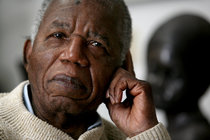 Chinua Achebe in 2008 at Bard College in Annandale-on-Hudson, New York, where he was a professor. Credit Craig Ruttle/Associated Press
Chinua Achebe in 2008 at Bard College in Annandale-on-Hudson, New York, where he was a professor. Credit Craig Ruttle/Associated Press
Chinua Achebe, African Literary Titan, Dies at 82
The New York Times
By JONATHAN KANDELL
MARCH 22, 2013
Chinua Achebe, the Nigerian author and towering man of letters whose internationally acclaimed fiction helped to revive African literature and to rewrite the story of a continent that had long been told by Western voices, died on Thursday in Boston. He was 82.
His agent in London said he had died after a brief illness. Mr. Achebe had used a wheelchair since a car accident in Nigeria in 1990 left him paralyzed from the waist down.
Chinua Achebe (pronounced CHIN-you-ah Ah-CHAY-bay) caught the world’s attention with his first novel, "Things Fall Apart." Published in 1958, when he was 28, the book would become a classic of world literature and required reading for students, selling more than 10 million copies in 45 languages.
The story, a brisk 215 pages, was inspired by the history of his own family, part of the Ibo nation of southeastern Nigeria, a people victimized by the racism of British colonial administrators and then by the brutality of military dictators from other Nigerian ethnic groups. Read more
"Things Fall Apart" gave expression to Mr. Achebe’s first stirrings of anti-colonialism and a desire to use literature as a weapon against Western biases. As if to sharpen it with irony, he borrowed from the Western canon itself in using as its title a line from Yeats’s apocalyptic poem "The Second Coming."
"In the end, I began to understand," Mr. Achebe later wrote. "There is such a thing as absolute power over narrative. Those who secure this privilege for themselves can arrange stories about others pretty much where, and as, they like."
Though Mr. Achebe spent his later decades teaching at American universities, most recently at Brown, his writings — novels, stories, poems, essays and memoirs — were almost invariably rooted in the countryside and cities of his native Nigeria. His most memorable fictional characters were buffeted and bewildered by the competing pulls of traditional African culture and invasive Western values.
"Things Fall Apart," which is set in the late 19th century, tells the story of Okonkwo, who rises from poverty to become a wealthy farmer and Ibo village leader. British colonial rule throws his life into turmoil, and in the end, unable to adapt, he explodes in frustration, killing an African in the employ of the British and then committing suicide.
The acclaim for "Things Fall Apart" was not unanimous. Some British critics thought it idealized precolonial African culture at the expense of the former empire.
"An offended and highly critical English reviewer in a London Sunday paper titled her piece cleverly, I must admit, ‘Hurray to Mere Anarchy!’ " Mr. Achebe wrote in "Home and Exile," a 2000 collection of autobiographical essays. Some critics found his early novels to be stronger on ideology than on narrative interest. But his stature grew, until he was considered a literary and political beacon, influencing generations of African writers as well as many in the West.
"It would be impossible to say how ‘Things Fall Apart’ influenced African writing," the Princeton scholarKwame Anthony Appiah once wrote. "It would be like asking how Shakespeare influenced English writers or Pushkin influenced Russians."
Mr. Appiah, a professor of philosophy, found an "intense moral energy" in Mr. Achebe’s work, adding that it "captures the sense of threat and loss that must have faced many Africans as empire invaded and disrupted their lives."
Nadine Gordimer, the South African novelist and Nobel laureate, hailed Mr. Achebe in a review in The New York Times in 1988, calling him "a novelist who makes you laugh and then catch your breath in horror — a writer who has no illusions but is not disillusioned."
Read more on The New York Times
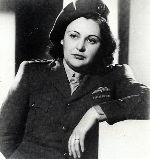 Nancy Wake was the most famous member of the French Underground movement and delayed the 2nd SS Panzer Division heading towards Normandy by 16 days
Nancy Wake was the most famous member of the French Underground movement and delayed the 2nd SS Panzer Division heading towards Normandy by 16 days
Nancy Wake, War Hero, 98
MailOnline
by Tony Rennell
August 9, 2011
Blisteringly sexy, she killed Nazis with her bare hands and had a 5 million-franc bounty on her head. As she dies at 98, the extraordinary story of the real Charlotte Gray
She stares into the camera with a coquettish half-smile and an unflinching come-hither look. The eyebrows are plucked, the lips full, the long auburn hair a classic
1940s style, falling onto the shoulders of her khaki uniform.
She could easily have been one of the sassy songbirds who brightened up World War II. But this was the face of Nancy Wake, one of that conflict’s bravest underground
fighters against the Germans in France — and certainly the most stylish.
A male comrade-in-arms in the French Resistance summed her up as: ‘The most feminine woman I know, until the fighting starts. And then she is like five men.’ She lived
up to both parts of that compliment.
So feminine was she that when escaping from pursuers on one notable occasion, she dressed in a smart frock, silk stockings, high-heeled shoes and a camel-hair coat,
arguing that she didn’t want to look like a hunted woman.
In that same outfit, she jumped from a moving train into a vineyard to avoid capture at a Nazi checkpoint.
And so aggressive was she that, after being parachuted into France as a Special Operations Executive agent, she disposed of a German guard with her bare hands and liked
nothing better than bowling along in the front seat of a fast car through the countryside, a Sten gun on her lap and a cigar between her teeth, in search of Germans to kill.
Passionate and impulsive, with a tendency to draw attention to herself, she was not the ideal undercover agent. Her superiors didn’t think she would last long behind
enemy lines.
But Wake proved them wrong and died this week, aged 98, in a nursing home for retired veterans in London. Her death brought to an end a life of such daring, courage and
glamour that she was the inspiration for the Sebastian Faulks novel Charlotte Gray, which was made into a film starring Cate Blanchett. Read
more
Nancy Wake, Wikipedia
Nancy Wake, Proud Spy and Nazi Foe, Dies at 98
New York Times, By PAUL VITELLO, AUG. 13, 2011
By Paul Stanley Ward, NZEDGE.com
Reader comment: I find it terrible that I'm 23 and I had no idea this woman existed. We didn't learn about people like this in school, but I wish we had. What an inspiration, what a hero. Rest in
Peace Nancy, I hope you find peace and happiness wherever it may be that you are now. You were a true hero. Thanks for the article DM, nice to read about something other than [insert celebritie's
name here]'s breasts/diet/bikini.
- Becky, Manchester, 10/8/2011 13:36




